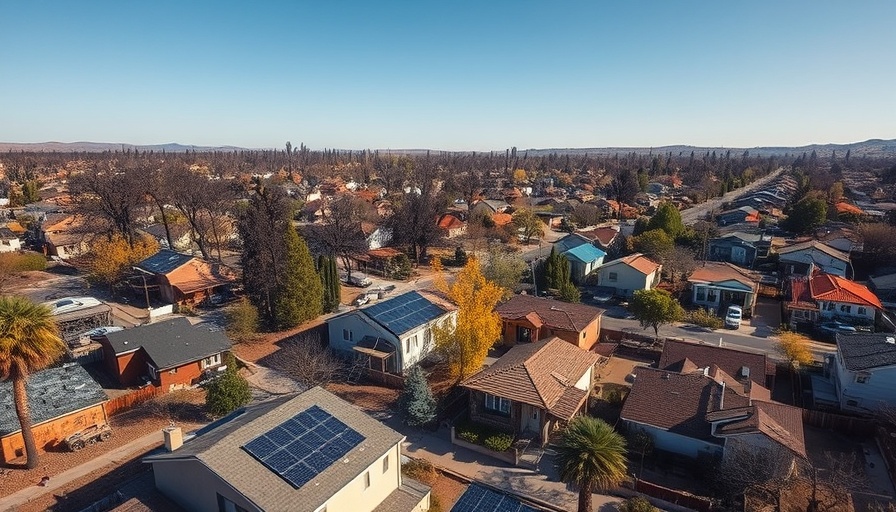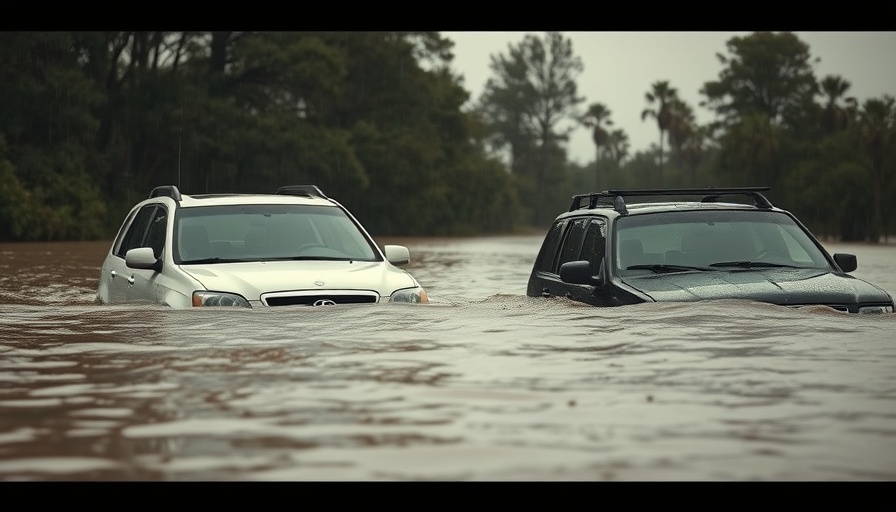
Are Your Anker Devices Safe? A Comprehensive Overview
In a world where portable charging solutions are essential for staying connected, recent news of Anker's recall of over a million power banks has raised serious concerns among California homeowners and tech enthusiasts alike. This recall could impact anyone who relies on portable charging devices, especially in an era where mobile technology is deeply integrated into our daily lives.
What Prompted the Recall?
Analyzing the recall reveals deeper issues than just product failure. Anker's recall stems from a risk associated with lithium-ion batteries, known for their fire risk if not manufactured or maintained properly. Anker admitted to previously identifying only specific models—namely the A1263 PowerCore 10000—a problem which management quickly escalated upon realizing a wider issue. It’s critical for consumers to understand that the safety of battery technology is paramount; small defects can lead to significant hazards.
Which Models Are Affected?
For those in the market for or currently using Anker power banks, here is a careful breakdown of the affected models:
- Anker Power Bank (10K, 22.5W) — Model A1257
- Anker Power Bank (20,000mAh, 22.5W, Built-In USB-C Cable) — Model A1647
- Anker MagGo Power Bank (10,000mAh, 7.5W) — Model A1652
- Anker Zolo Power Bank (20K, 30W, Built-In USB-C and Lightning Cable) — Model A1681
- Anker Zolo Power Bank (20K, 30W, Built-In USB-C Cable) — Model A1689
If you own any of these models, it is vital to stop using them immediately, further emphasizing the urgency of Anker's warning.
How to Address the Fire Risk
It might be tempting to throw away potentially hazardous devices, but experts caution against this. Anker's guidelines specify that recalled lithium-ion batteries should be discarded correctly. They recommend checking for nearby hazardous waste disposal centers in California that accept this type of battery. This is crucial, given that improper disposal can lead to environmental harm.
Why Should You Take This Seriously?
Although Anker claims the likelihood of malfunction is minimal, their decision to recall amidst mounting scrutiny reflects a broader tendency in the tech world to prioritize consumer safety. This incident highlights a larger trend where tech companies have to balance innovation with hardware safety. With the prevalence of lithium-ion batteries in many electronic devices, understanding potential risks can lead to more informed purchasing decisions.
What Are Your Next Steps?
If you have an affected device, your next step is simple. Visit Anker’s official recall submission page, where they provide a user-friendly interface to confirm your model number and submit a replacement request. Along with receiving a new device, you might individually qualify for a gift card. Taking advantage of this offer not only safeguards your health and property but also shows your commitment to responsible consumer practices.
Reflecting on Past Incidents
Today’s recall only highlights the importance of continuous vigilance regarding product safety. Recent recalls have shown a trend of companies being more proactive in seeking compliance and safety post-manufacturing, suggesting that tech companies are learning from past mistakes. Anker's swift response stands as a test case for how tech firms can respond to potential failure risks with transparency and consumer care—an essential footing in today's marketplace.
Keeping Yourself and Your Home Safe
Households today should implement familiar routines for checking their devices. Understanding how to manage risks, whether through recalls or regular maintenance checks, equates to a significant investment in family safety. By staying informed about recalls and safety procedures, homeowners can help ensure that their homes remain safe havens amid technological advances.
Conclusion: Stay Informed and Safe
The recent recall of Anker's power banks serves as a potent reminder of the importance of remaining vigilant about household electronics' safety. For homeowners in California who must juggle multiple devices every day, awareness around device safety can't be overstated. Stay informed, and take the necessary actions to safeguard your home. Doing so will empower you to make wise choices in a rapidly changing tech landscape.
 Add Row
Add Row  Add
Add 




Write A Comment